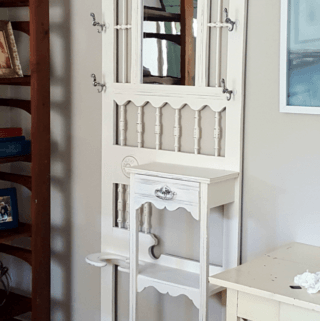Photo by Stephen Ellis on Unsplash
When you take on the responsibility of restoring a historic farmhouse, you’re taking on the entire project. And it doesn’t get any easier as time goes by. If your home is anything like others, then you’re probably feeling the pressure and wondering how much more you can possibly squeeze out of such a tiny space.
Here are five things you should know about restoring an old farmhouse:
1. Things to consider when restoring a farmhouse
When we began our renovation, we were lucky to have a pretty strong foundation. The house has undergone a few renovations, but the foundation remained mostly intact. We only needed to update the plumbing and electrical systems — things we knew how to do before. Before we began, we knew exactly what we were getting ourselves into. If we were to improve certain things, we had to make sure we didn’t damage any structural parts of the home. We also had to be mindful of our neighbors and city code restrictions. For example, we had to be careful with our roofing choices and ensure they didn’t clash with any nearby neighbors. We also had to be careful when adding too much structural support to the house, which can damage its historic integrity. If there is one thing we’ve learned throughout our renovation process, it’s that you have to be ready for everything.
2. How long does it take to restore an old farmhouse?
Restoring an old farmhouse can be a lengthy process. Ideally, you’ll want to start the renovation process as soon as possible, but it’s important to remember that a house is made of many individual parts. Any renovations will require some form of mechanical or electrical work, which can be costly. When you’re restoring an old farmhouse, you’ll also want to keep in mind that any changes you make to the structure of your home also require structural changes to the building code. In other words, you can’t do something that “works,” and then put up with the fact that it doesn’t match the rest of the house. You may also want to consider hiring a contractor to help you with any major renovations and inspections. This will help you take advantage of any savings that a contractor can offer you and give you time to focus on the things that are most important to you.
3. Don’t skimp on the foundation repairs
We’ve said it before and we’ll say it again, your foundation is the most important part of your home. You can’t renovate without it, and the only person who can tell you what repairs are needed is a professional contractor. Luckily, our foundation was in great shape and required only minor repairs to be made. We replaced the existing concrete slab with a jack-proof one. We also had the original beams and trusses re-installed, which required some minor adjustments. Overall, our project cost just under $12,000, which doesn’t include the cost of the home improvements we made to the exterior of the house.
4. Take your time with the exterior improvements
There are a few exterior renovations you can make to your farmhouse — but you’ll want to take your time with them. The first thing you’ll want to do is add shutters to your windows. If your windows don’t have shutters, now is the time to install them. We also installed a new pitched roof, which is a relatively quick and inexpensive renovation. You can also consider adding a porch or entrance to your home, or, if you have a barn, RealCraft sliding barn doors, which will add a nice aesthetic touch. You’ll also want to consider replacing your mailbox. We also had our home assessed and received a home energy assessment report to help us identify any energy-saving renovations we could make. We’re still working on implementing many of the recommendations, but we’re happy to see that they’re already making a noticeable difference!
5. Interior renovations
There are a few interior renovations you can make to a farmhouse — but you’ll want to take your time with them. The first thing you’ll want to do is make sure you have plenty of room for the furniture in your new home. We weren’t able to add any new furniture to the old farmhouse, so we plan to create additional storage space with the help of a few cabinetry solutions. You’ll also want to make sure you have enough space for your growing family. Many farmhouses were built with only one bathroom and one main bedroom, so don’t forget to plan ahead. Make sure you’re ready to accommodate the addition of a newborn or larger family.
Conclusion
Restoring an old farmhouse can be a rewarding experience, but you have to be ready for the challenge. It takes time, patience, and a good bit of money to renovate an old home. It’s important to remember that a farmhouse is more than bricks and mortar. It’s a piece of American history, and you can make it even better. There are many ways to restore a farmhouse and make it more comfortable and functional for modern living. As you work to restore your own farmhouse, keep these things in mind and you’ll be well on your way to a rejuvenated classic!
Please note that some of the links above and below are affiliate links, and at no additional cost to you. All opinions are my own.








